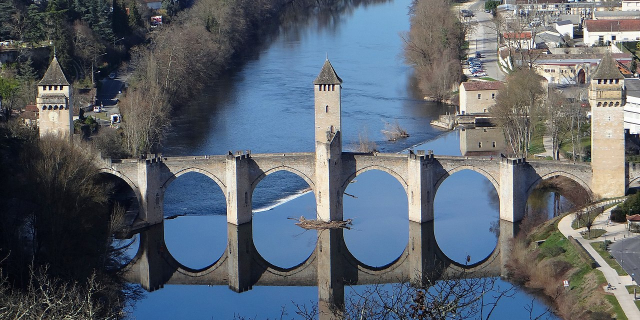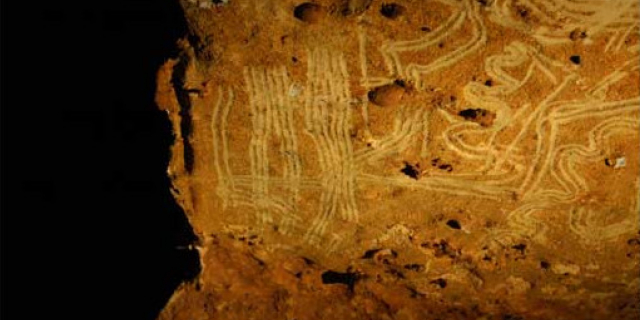Cahors (French: [kaɔʁ]; Occitan: Caors [kaˈuɾs, ˈkɔw(s)]) is a commune in the western part of Southern France. It is the smallest prefecture among the 13 departments that constitute the Occitanie Region. The main city of the Lot department and the historical center of the Quercy, Cahors is home to 19,878 cadurciennes and cadurciens.
Nestled in a meander of the Lot and surrounded by steep arid limestone hills, this historic city is home to a great monumental diversity, mainly inherited from Roman times and the Middle Ages; the city's monuments include a historic city centre, Saint-Étienne cathedral, Roman walls and the famous Valentré bridge (a UNESCO World Heritage Site as part of the pilgrimage path to Santiago de Compostela). Famed for its wine and gastronomy (truffles and foie gras), this southern French city ho...Read more
Cahors (French: [kaɔʁ]; Occitan: Caors [kaˈuɾs, ˈkɔw(s)]) is a commune in the western part of Southern France. It is the smallest prefecture among the 13 departments that constitute the Occitanie Region. The main city of the Lot department and the historical center of the Quercy, Cahors is home to 19,878 cadurciennes and cadurciens.
Nestled in a meander of the Lot and surrounded by steep arid limestone hills, this historic city is home to a great monumental diversity, mainly inherited from Roman times and the Middle Ages; the city's monuments include a historic city centre, Saint-Étienne cathedral, Roman walls and the famous Valentré bridge (a UNESCO World Heritage Site as part of the pilgrimage path to Santiago de Compostela). Famed for its wine and gastronomy (truffles and foie gras), this southern French city holds the label of the French Towns of Art and History. The Cadurcian economy is reliant on tertiary services and makes Cahors the Lot's economic centre.
 Hôtel de Roaldès
Hôtel de RoaldèsCahors has had a rich history since Celtic times. The original name of the town was Divona or Divona Cadurcorum, "Divona of the Cadurci," Divona was a fountain, now called "la fontaine des Chartreux", worshiped by the Cadurci, a Celtic people of Gaul before the Roman conquest in the 50s BC. The Cadurci were among the last Celtic tribes to resist the Roman invasion. Cahors derives from Cadurcorum.[1] However, romanization was rapid and profound: Cahors became a large Roman city, with many monuments whose remnants can be seen today. It has declined economically since the Middle Ages, and lost its university in the 18th century. Today it is a popular tourist centre with people coming to enjoy its medieval quarter and the 14th-century fortified Valentré bridge. It is the seat of the Diocese of Cahors.
It was also notorious at that time for the financiers widely known as Cahorsins, Christians who charged interest on their loans. The church in these times said that using money as an end in itself (usury) was a sin. Because of this Cahors became synonymous with this sin, and was mentioned in Dante's Inferno (XI.50) alongside Sodom as wicked.
Pope John XXII, born Jacques Duèze or d'Euse, was born in Cahors in 1244, the son of a shoemaker.
In the 2007 Tour de France, Cahors was the start of stage 18. Cahors also in the 2022 Tour de France was the finish of stage 19.































Add new comment